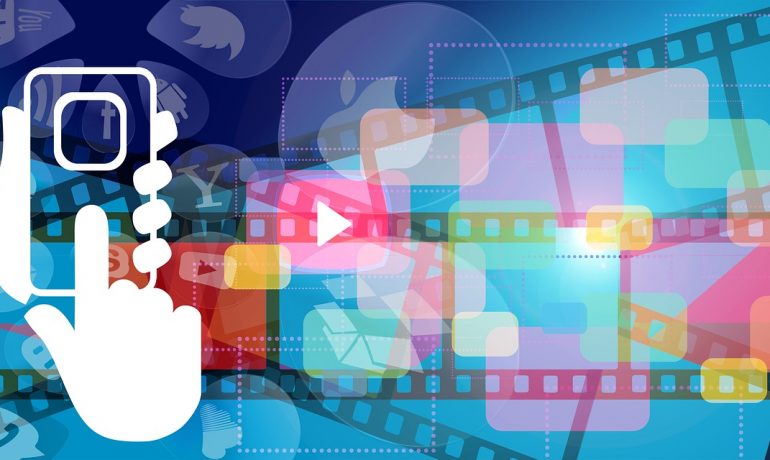Technology advances at a remarkable rate, but even more dramatic claims are made for some innovations which never in the end deliver. Some are just a ridiculous idea in the first place; others end up in narrower niches and at smaller scale than initially thought. At the weirdness end of the range, this year’s Consumer Electronics Show gave us a smart toilet paper holder, and soft toys that nibble your fingers.
One well-established model that describes this evolution is the Gartner Hype cycle.
![]()
This describes how early high expectations are tempered by reality until second-or third-generation products find an appropriate application.
One example of this could be delivery drones. Ten years ago, back in 2013, Jeff Bezos announced that Amazon was testing delivery by drones. The press became very excited. However, little has been heard of the concept over the years as practical problems were encountered. Nonetheless, delivery drones have already found specialist medical applications – eg in Rwanda, blood supplies have been delivered by drone to rural areas since 2016; in Denmark, defibrillators can be sent to scenes of cardiac emergencies. Admittedly, in 2022 Amazon announced it was trying again, as the FAA had granted some waivers – but it’s hard to see this succeeding at scale.
The limitation of this model is that it is descriptive, rather than predictive. It is clear that a small number of developments such as smartphones sweep to global success. How can we tell which ones they will be?
Other technology diffusion theories focus on different types of customer – eg early adopters. These are seen as typically being more technology aware, richer, better educated and experimental. In the social media age they can also be “influencers”.
NASA approached the issue from the technology end, defining different levels of technology readiness for use in the space industry. This approach has been gaining ground in other industries but there remains some scepticism as to its usefulness. We use Technology Readiness Levels (TRLs) extensively in our Sustainability Innovation Pathway Framework.
Sometimes, adoption depends on the simultaneous development of technologies in adjoining fields. For example, video-on-demand services came about because of the coincident arrival of low-cost disc storage, higher bandwidth broadband and improved processing. The nexus of Internet of Things, Big Data analysis and Machine Learning similarly allows leaps forward. Potentially, AI and biotechnology together will accelerate innovation.
Barriers to adoption are often not about the technology itself, but more about the economics and the wider societal eco-system. Some seminal examples are:
- Videophones – the development of videotelephony as a subscription service started in the latter half of the 1920s, but it never became a generally widespread product, as the costs (both of equipment and comms links) were high and telecoms companies regarded it as a premium product that they could charge more for. Despite featuring in sci-fi programmes such as Star Trek, real-life products were not appearing. Advances in broadband, and innovative software fundamentally changed the business model. Skype offered video-communication free and the equipment needed was already generally available. The Covid pandemic finally wiped away residual barriers and Zoom calls/meetings are now standard.
- Electric vehicles: although once widely used for milk delivery, where speed was not an issue, electric vehicles failed to take hold until the recent Green Agenda. (Milk delivery also featured environmentally favourable reusable bottles!). The Sinclair C5 was a complete flop, yet now would sit in an easy niche between electric cars and e-bikes, e-scooters etc.
- Flying cars: another staple of sci-fi since the Jetsons in the 1960’s, or earlier. But the technological challenges of widespread use of flying cars are dwarfed by the logistical issues of traffic control, safety and landing sites. The 1997 film “The Fifth Element” showed some of the problems – with a lead character falling into a flying taxi.
Some of the wider considerations affecting adoption can be categorised as:
- Ease of use. This includes integration with other existing technologies and established ways of working. Changing behaviours is a barrier. Oddly, the original SMS system was very difficult to use – needing three key depressions for some letters – yet was successful because of the price. So, more generally, we look at
- Price vs utility: clearly a fundamental consideration. This can also depend on the general economic environment – today’s “cost of living” crisis is not a time to introduce “nice to have” services.
- Comparison with alternatives: smartphones overtook Personal Digital Assistants and Filofax
- Infrastructure requirements: typically infrastructure takes longer to develop than devices, but can eventually offer economies of scale. The telecoms/internet industry battles between the “Edge” and the “Cloud” are an example of this tension. Hyperloop faces similar challenges.
- Regulatory issues: air traffic control was mentioned above – similar considerations apply to drones (privacy, safety); labour market rules are beginning to challenge Uber approaches to employment; Concorde was to a degree stymied by sonic boom issues (though politics and economics also played a role).
- Business eco-system: often linked developments are needed between, for example devices and content with the whole package being necessary – Betamax/VHS being a classic example. TV streaming services are a similar dynamic as Netflix etc move into content creation.
But sometimes it is just the technology itself. Nuclear fusion has been the “coming” energy revolution since the original concepts in the 1930s. Its green credentials make it very attractive. Recent announcements about a breakthrough, where more energy was produced than used, launched another hype wave. But even its developers admit that timescales are long: “a few decades of research could put us in a position to build a power plant”. It most certainly is not an answer to the current climate crisis.
Looking forward what can we say about two major areas of development?
Crypto-currencies and Blockchain
Is there widespread utility for crypto-currencies? Are there economic or social advantages? Are they (or will they) be subject to restrictive regulation? The signs are not good, and personally I would suggest that this is one for the “plateau”.
Blockchain more generally has some clear applications and utility, even social benefits when applied to land rights for women in sub-Saharan Africa. But again, applications seem limited and a plateau would be my forecast.
Artificial Intelligence
This is now such a wide field, with myriad applications, that it is hard to generalise. The “Singularity” of self-replicating AI outstripping human intelligence is discussed less these days. Many leading scientists, including Stephen Hawking were concerned for the future of the human race. Ray Kurzweil’s 2005 book The Singularity is Near, predicted singularity by 2045.
Specific applications of AI are taking hold rapidly, though not uniformly.
- Voice assistants: Amazon’s Alexa seems to be losing its appeal – the division lost $3 billion in just the first quarter of 2022. New users discover half the features they’ll ever use within three hours of activation and 15% to 25% were not using the virtual assistant in the second week. The recently launched ChatGPT is creating a new hype wave about AI capabilities. Despite its many strengths, it has been described as ““like an undergraduate confidently answering a question for which it didn’t attend any lectures. It looks like a confident bullshitter that can write very convincing nonsense.”
- Legal applications: automation of many standard legal tasks – surveying etc – is now very feasible, raising concerns about automation of more junior roles.
- Medical applications: a wide range of medical applications of AI are emerging, from radiography to vaccine design. Interestingly, in this field, AI is seen as supporting the professionals.
- Art: AI systems are capable of imitating grand masters. Many art design projects could be delivered by AI. But the real challenge of “grand masters” is not imitating them, but moving beyond to new creations. AI art has been described as “competent but dull” – but then so is much human-created art.
So where do we see AI on the hype cycle? It is undoubtedly valuable in many fields, with many applications not yet envisaged. But – perhaps thankfully – there seem to be limitations due to the content on which systems are trained, and true “intelligence” (whatever that is) may be a step too far. Perhaps it is finding many different plateaus.
Predicting the take-up of new technologies is, like most prediction, not a definitive science. When a newly hyped product emerges, however, it probably pays to consider how it fits into the wider socio-economic environment, rather than simply enjoying the thrill of the innovative technology. Futurists can help here – we live in the future enough to understand not only its possibilities, but how concepts like TRLs and the Hype Cycle can affect the way multiple futures may pan out.
Written by Huw Williams, SAMI Principal
The views expressed are those of the author(s) and not necessarily of SAMI Consulting.
Achieve more by understanding what the future may bring. We bring skills developed over thirty years of international and national projects to create actionable, transformative strategy. Futures, foresight and scenario planning to make robust decisions in uncertain times. Find out more at www.samiconsulting.co.uk
If you enjoyed this blog from SAMI Consulting, the home of scenario planning, please sign up for our monthly newsletter here and/or browse our website.
Featured image by Gerd Altmann from Pixabay


